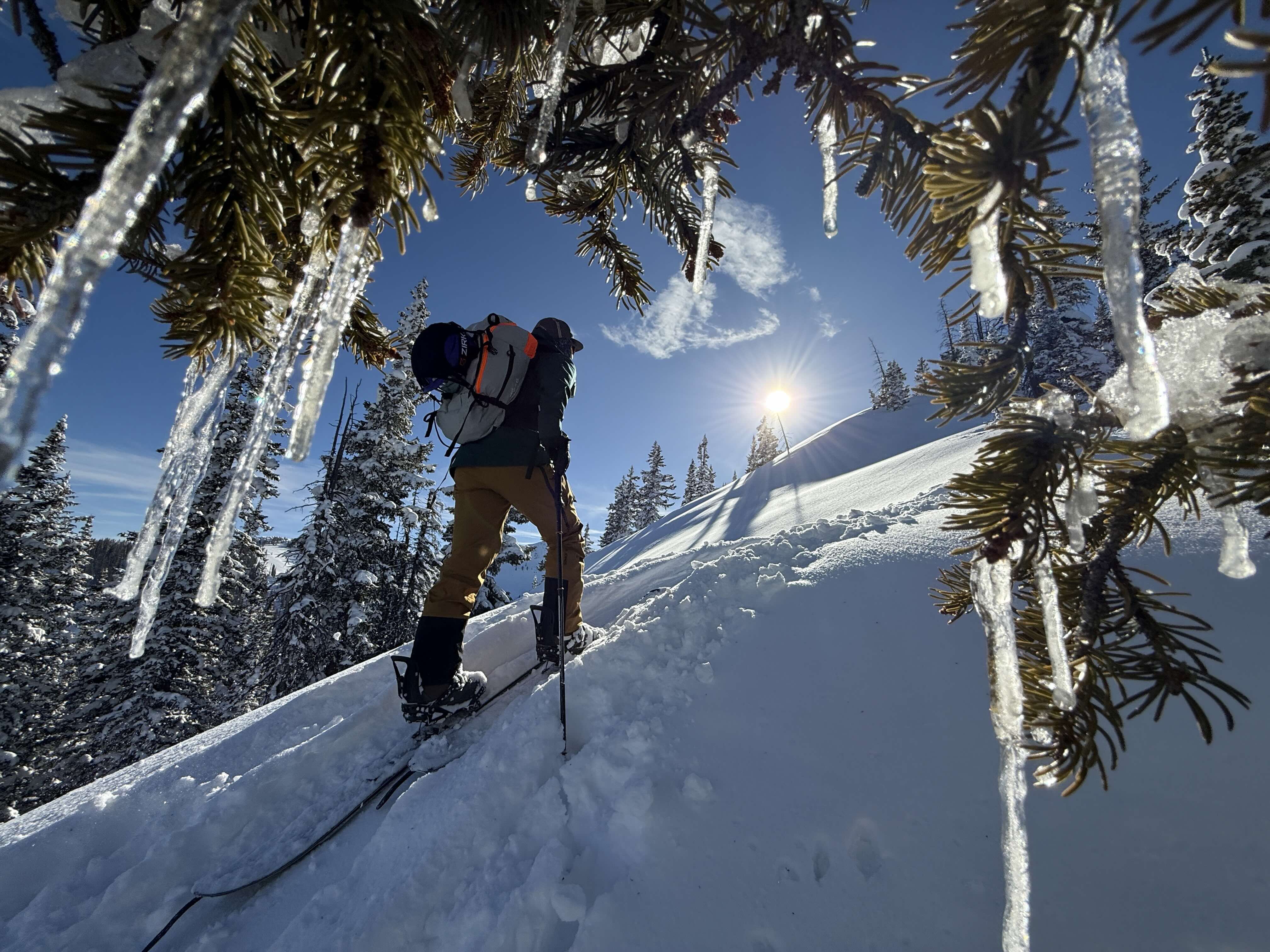Not many ski backpacks target women’s fit, let alone airbag-compatible ones. Enter the Mammut Tour 30 Women’s Airbag-Ready ski backpack.
When I needed to carry everything for a full day through avalanche terrain, the Tour 30 became my trusted partner. It’s the smaller sibling to Mammut’s Pro 45 but offers plenty of volume for half-day or longer adventures. It is compatible with the lightweight, removable Airbag System 3.0, delivering safety without sacrificing storage.
The Mammut Tour 30 Women’s airbag pack has a women’s-specific chassis, including a hip belt and back panel designed explicitly for female anatomy. The hip belt is shaped with camber for the hips. The back panel is shorter. And the cut and sew of the body is unique, so that the shorter back panel can pair with the same volume of the men’s Tour 30 Removable Airbag 3.0 ready. My S.O. (who’s male) borrowed my Tour 30 Women’s pack and found it to be comfortable, too.
I found that this pack’s overall size fits better and has less swing weight than the larger Pro 45. Ultimately, I appreciate how streamlined, technical, and well-organized this pack is. Also, I can tighten the hip belt to fit my narrow waist.
In short: The Mammut Tour 30 Women’s Airbag-Ready ($265) ski backpack hits the sweet spot for women who want avalanche safety and solid hauling capacity in a more compact format. I love its space, organization, and eco-conscious materials. While the hip belt, back panel, and pack shape are female-specific, the lack of targeted lumbar support and the missing internal pockets leave room for improvement.
Read the full lineup of ski pack options in the Best Ski Backpacks buyer’s guide.
-
Removable airbag system (sold separately) -
Semi-rigid panel for carry comfort -
One small zipper pocket on hip belt -
Helmet carrier
-
Removable Airbag System 3.0 costs another $475 -
Lacks targeted lumbar support -
Missing internal storage pocket that’s in the Mammut Pro 45
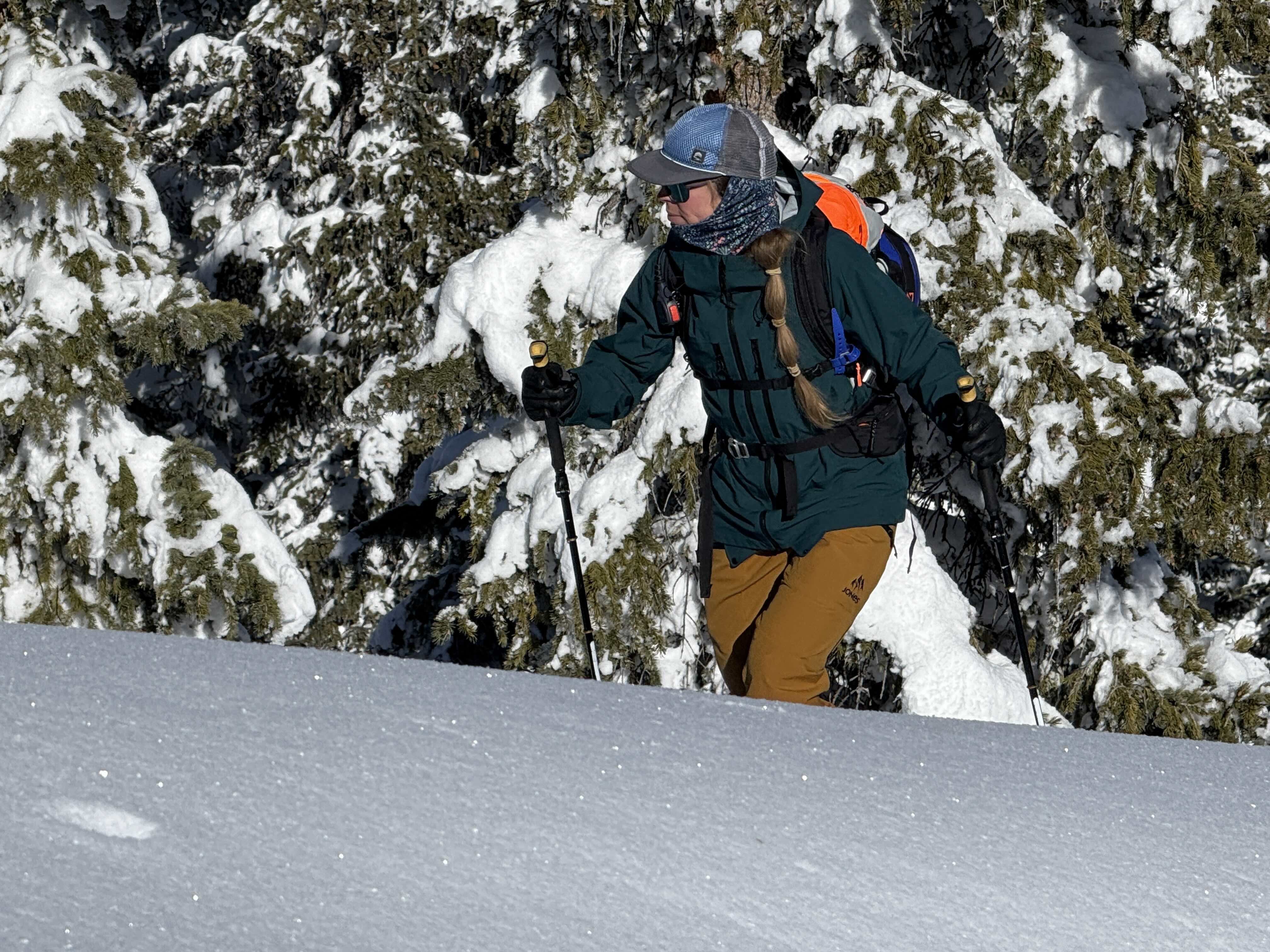
Fit & Field Testing
I tested the Mammut Pro 45 for a season, followed by the Mammut Tour 30 when it launched the following winter. The back panel on the Pro 45 is 19 inches long versus 16.5, and the hip belt circumference is about 2 inches shorter. So, in addition to the Tour 30’s smaller volume, the pack itself is more compact. The Pro (with an airbag and canister) weighs 0.6 pounds more.
Typically, I ski tour in Colorado’s Elk Mountains via sled-accessed terrain, and close to half my winter days are out-of-bounds. I occasionally tour in the San Juan Mountains. Usually, the temperatures range from 0 to 10 degrees, and I go out in stormy weather or when it’s clear. It’s rarely humid. Usually, a tour is 4-5 hours or more.
Mammut makes women’s-specific packs like the Nirvana 18, a technical freeride pack with adapted shoulder straps, a tailored hip belt, and a shorter back length for maximum comfort and freedom of movement. That version is limited to the 18L volume. A couple of those modifications appear on the Mammut Tour 30 compared to the unisex design, including a cambered hip belt and shorter back panel.
For context, Osprey champions the women’s-specific Sopris Pro 30 with the Alpride E2 Airbag System, which is an electric airbag with gender-specific sizing and shaping for optimal fit. I’m unaware of other female-specific avalanche airbag packs on the market today.
While the Mammut doesn’t have the lumbar support that Osprey is well known for, the length of the back panel and adjustable hip belt, shoulder, and chest straps made the Tour 30 work well for my more petite frame.
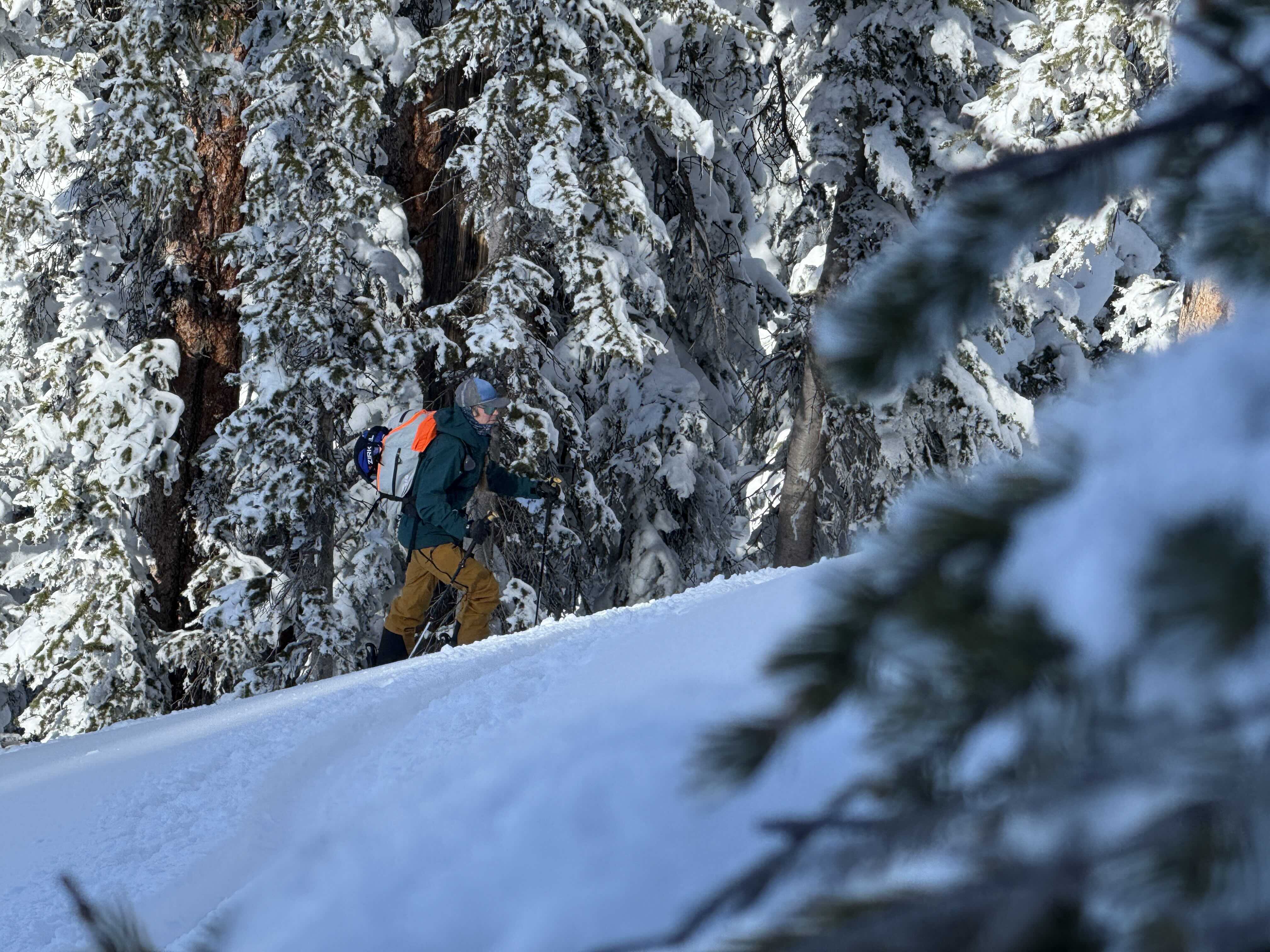

Storage & Organization
I appreciate the Tour 30’s clean, simple layout. A clamshell back panel reveals a roomy main compartment and a dedicated sleeve for the air cartridge. A deep mesh pocket holds my radio on the opposite side, with a convenient shoulder-strap exit.
A separate alcove (accessed by zipper inside the primary compartment) provides probe and shovel sleeves.
There’s a large mesh pocket inside the Pro 45, offering a stash spot for snacks or my satellite communicator. I’d prefer a zipper to prevent spills, and I’d prefer for the Tour 30 to have an internal pocket, too.
A voluminous, fleece-lined pocket up front is one of the best attributes of this design. The pocket is deep and 10.5 x 9.5 x 5 inches (nearly 500 cubic inches), so you can easily slide in a pair of sunnies, ski goggles, or an extra lens.
The only thing is, I end up using that pocket for all sorts of things — like a scraper, snacks, or glove liners — because it’s the only sizable pocket on the pack. Adding a roomy pocket inside the pack would be great, where I could put items like extra snacks, skin wax, and a binding repair kit. There’s a small hip-belt pouch for essentials like chapstick and a sunscreen stick or energy bar.
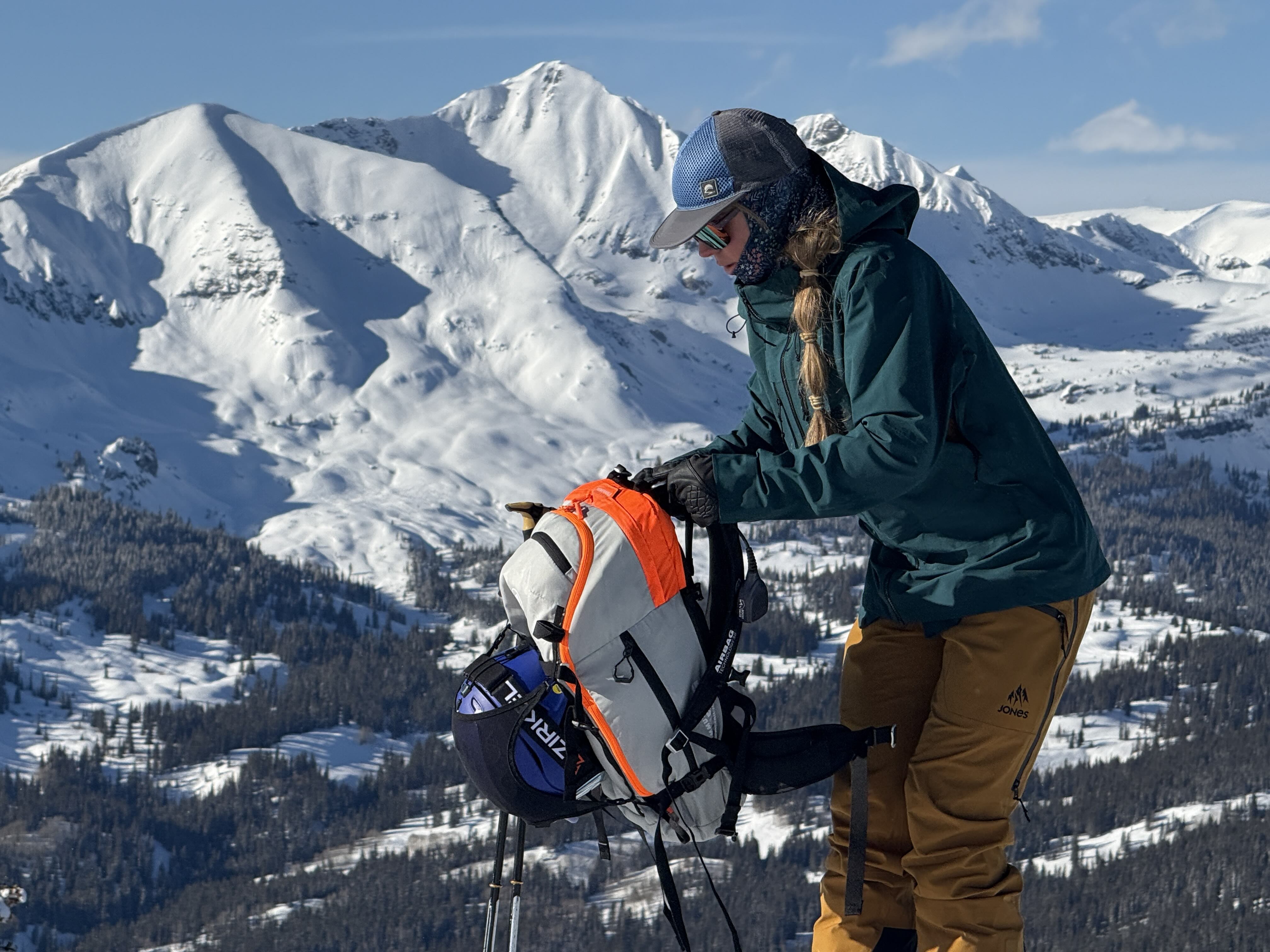

Carry Systems
The Tour 30 has a diagonal ski carrier and snowboard attachment. There’s also an A-frame style carry for skis or splitboard skis, which I prefer to use so that my boots don’t catch the bottom of my board. However, the airbag can’t properly inflate with that setup.
I use the helmet carry system on each ascent, and it’s solid. After testing the ice axe carry system on a couple of spring mountaineering objectives on Gothic Mountain, I can say it works well.
The pack has a side zipper that allows you to enter its compartment to pull out a water bottle or thermos without opening the entire clamshell, which I find very useful. At the top of the pack, I love the lean, large grab handle, which is handy for moving the backpack or hanging it to dry.
Inside is a sleeve for a hydration bladder, which I don’t use personally because I prefer to carry a bottle or two. Around here, a hydration tube often freezes, especially when driving a snowmobile and spending extensive hours outside in very cold temperatures. The exit port for the hydration tube is exposed and not inside a zippered or thermally lined compartment. Plus, I thread my radio mic through and attach it to the sleeve opposite the avalanche bag’s deployment handle.
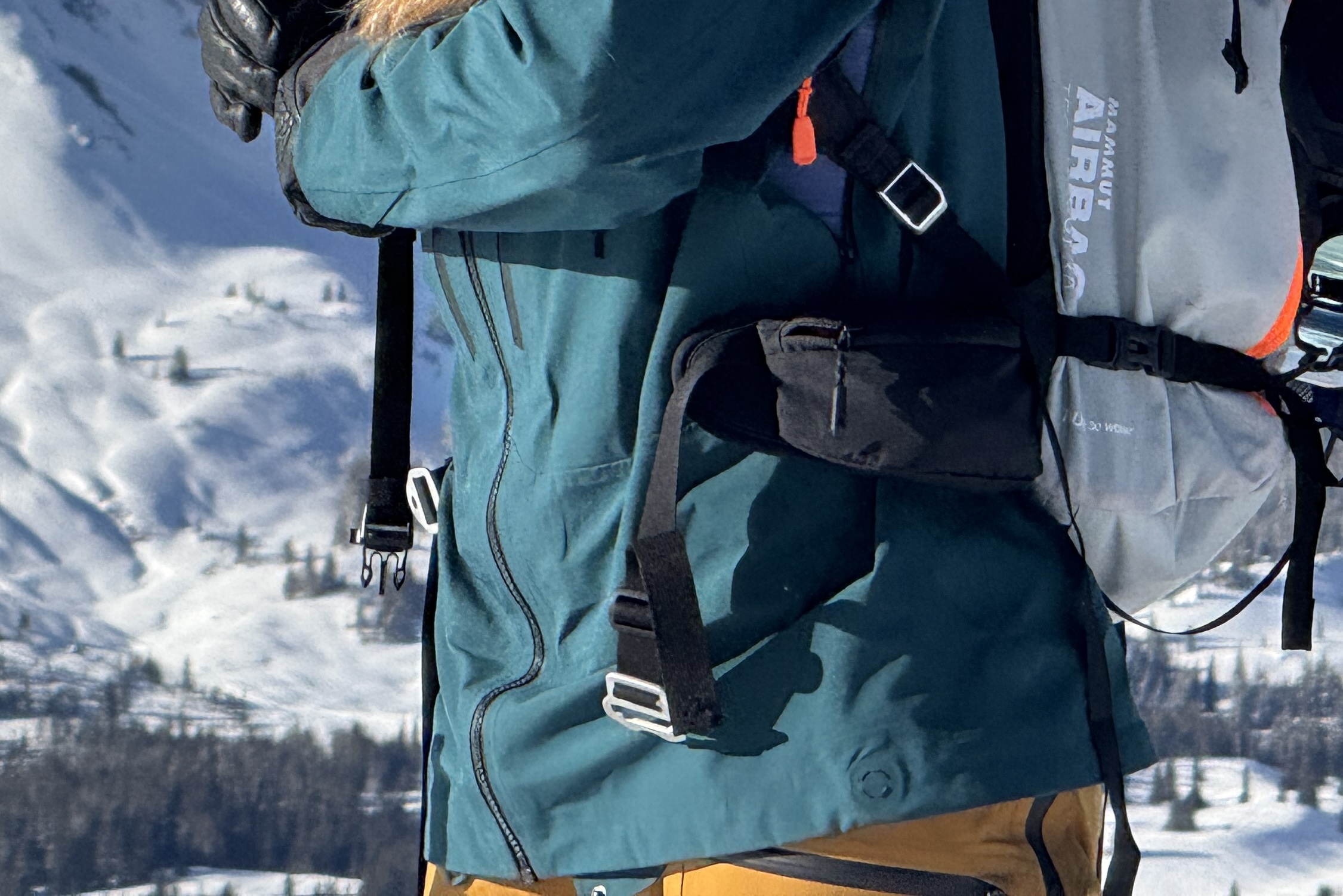

Adjustability & Back Support
I appreciate the lateral compression straps and load lifters on this pack. My ski pack’s volume changes a lot depending on the objective, time of day, and what layers I’m wearing. Being able to adjust the pack so that it remains compact helps reduce swing weight. I prefer not to think about my pack when I’m enjoying the pow!
Other adjustable straps include the chest straps, which slide up the shoulder straps. It takes some effort, but I like that system rather than needing to unhook the chest straps from a daisy chain. The shoulder straps tighten down. The hip belt has a durable metal buckle, which is easy to use.
There are two webbing adjusters to change the tightness of the waist, but I wish they were quicker and easier to operate. Again, my waist changes throughout the day based on how many layers I need to wear.
I like the back panel’s material, a high-density two-layer EVA padding that sheds snow well and is smooth. Eight raised rectangular sections on the sides of the back panel create articulation and small air channels on the sides of the back.
While the construction feels moderately firm and supportive, it’s not the most constructive, and there’s no targeted shaping or lumbar support. For instance, if something firm inside the pack lodges against the panel, it presses into my back.
The hip belt and shoulder straps are made from the same sturdy, slightly malleable material and wrapped with stretch fabric. They feel slender yet durable, and though they lack heavy padding, its ergonomic design is supportive. Overall, the pack carries weight well.


Material Quality
The pack’s exterior face and liner are made with recycled fabric, and the construction is entirely PFC-free, which is cool to see. Among the other packs we’ve tested and selected, only the Gregory Women’s Targhee 30 and Men’s Targhee 45 are partially made with recycled material and PFC-free DWR. The Osprey Kresta 30 and Osprey Kamber 20 also have PFC-free DWR.
It’s a nice touch to have an SOS label printed inside the pack with emergency instructions, such as an equipment checklist and instructions on how to send an alpine emergency signal. I have sensitive eyes, so I also like the bright orange interior, which allows me to see more easily inside my pack compared to a black material that absorbs light.
Critiques
For me, the Tour 30’s Achilles heel is that there’s no interior zipped pocket to stash essentials I don’t need to access throughout the day. I’d like to see another pocket inside, where I can stash items like my binding repair kit, binding tool, or skin wax.
It would be great if the two webbing adjusters on the hip belt were easier to operate. I’d also like to see a bit of lumbar support added. Otherwise, this premium pack is a highly functional, thoughtfully made, and streamlined women’s-specific option for avalanche terrain.
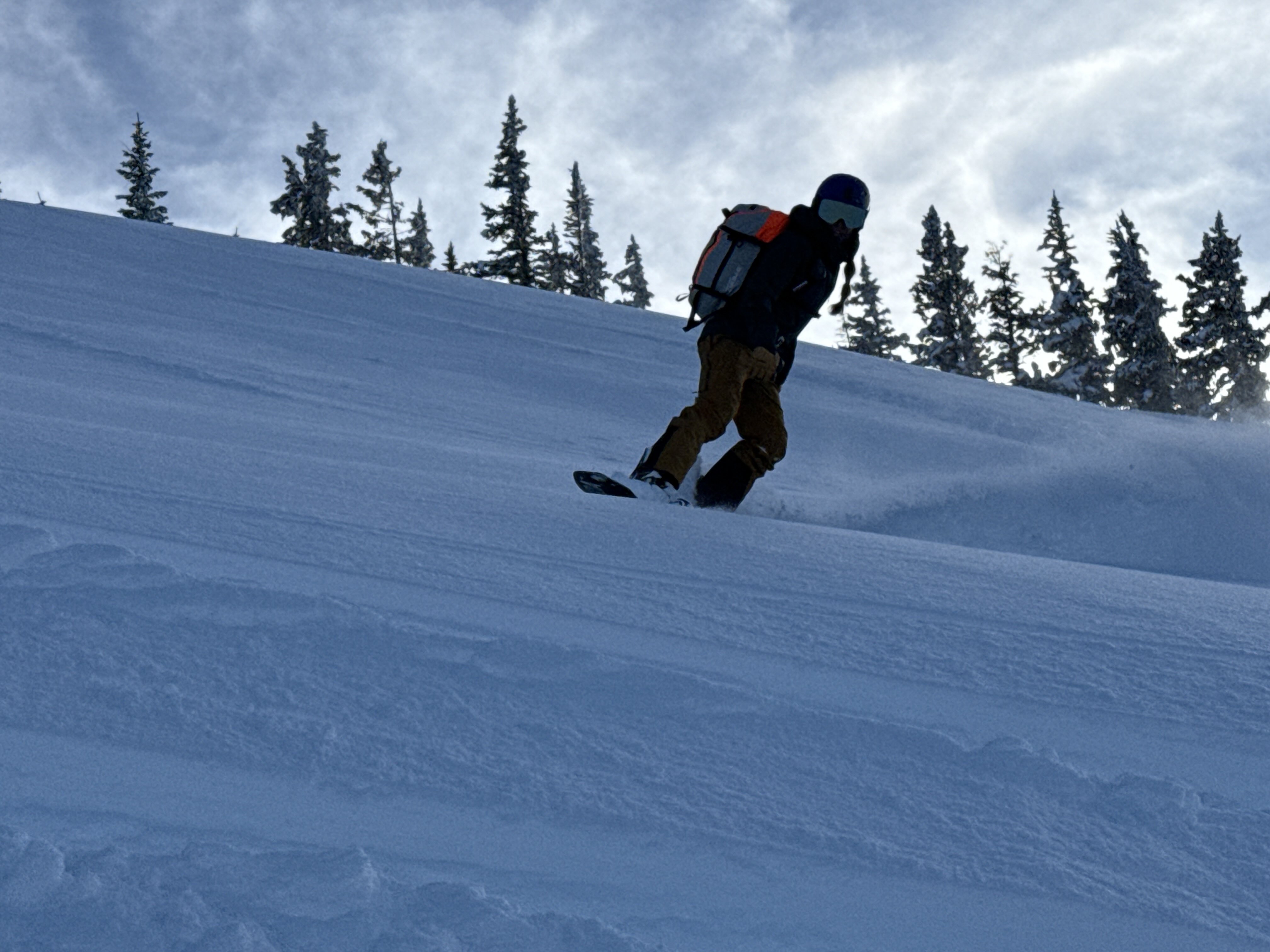

Conclusion
The Mammut Tour 30 Women’s Airbag-Ready ski backpack offers top-tier safety, is shaped for the female physique, and is built for athletes traveling in avalanche terrain. Those foundational details make this design unique among a sea of ski backpacks.
This pack offers impressive organization and a solid amount of volume for a full day out. While I wouldn’t use this pack for an overnight hut-to-hut trip or a larger expedition — for that, I’d prefer the Pro 45 — I really appreciate the adjustability and compactness of the Tour 30 alongside its safety benchmark of being airbag ready.
With a moderately firm back panel, minimal lumbar support, and streamlined but moderate material on the hip belt, it works fine for a full-day tour for me, even when it’s fully loaded. But if you want more carry comfort, consider the Gregory Targhee 30 or Osprey Kresta 30 for women, which have more built-out lumbar support and padding in the hip belts.
Altogether, the pack, cartridge ($230), and Airbag System 3.0 ($475) cost $970 if purchased separately. If you snag the pack and Airbag System 3.0 in a bundle, you save $60. In comparison, the women’s-specific Sopris Pro 30 with the Alpride E2 Airbag System and cartridge costs $1,400 — but that’s an electronic system, so it’s not apples to apples.
Overall, the Tour 30 is the right choice if avalanche safety, streamlined functionality, and gear capacity top your priority list.
Read the full article here




